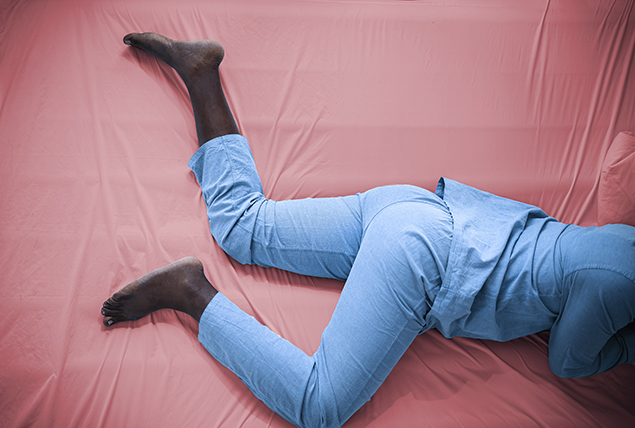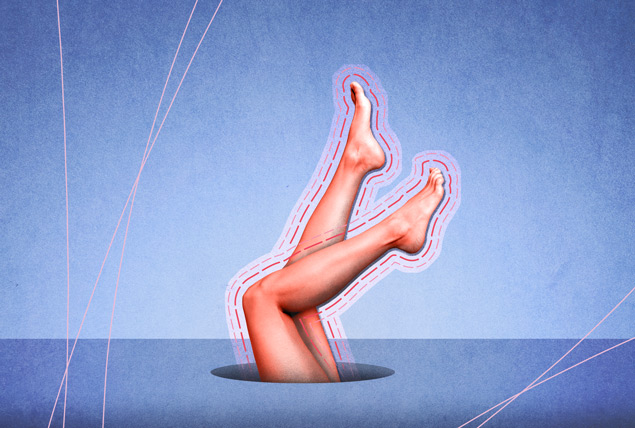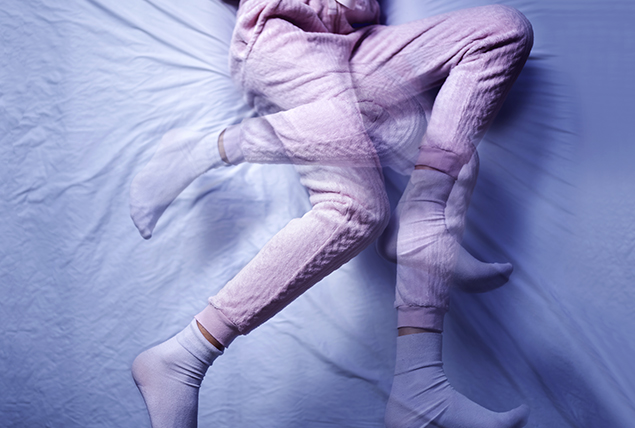The Myths and Misconceptions of Restless Legs Syndrome

Key Points
- Restless legs syndrome may be the proverbial canary in a coal mine, warning you of a dip in mental health.
- Managing restless legs syndrome requires a lifestyle overhaul to eliminate unhealthy behaviors and promote lasting change.
- Exercise and movement can help boost circulation. Don't exercise too close to bedtime, as late-night workouts have been found to intensify sensations of RLS for some.
Restless legs syndrome (RLS) is an ever-shifting topic of debate and discovery within the medical community.
Part of the confusion is because, despite the name, RLS can also extend to the upper extremities. Similarly, the neurological disorder can exist as a primary condition or as a symptom of a completely different issue.
A warning about your mental health
Fred Pescatore, M.D. of New York City noted that restless legs syndrome may be the proverbial canary in a coal mine, warning you of a dip in mental health.
"Some studies have shown that RLS symptoms precede those of depression or anxiety, and others relate the severity of mood symptoms to the severity of RLS symptoms," he said.
Psychosomatic symptoms are frustrating and can feel like we're losing control of our bodies, but the silver lining is that these symptoms are a concrete example of often ignored or misunderstood feelings.
Let's take a look at some common misconceptions and misinformation about restless legs syndrome.
1. RLS can be ignored
Robert Pagano, founder of the Sleepline.com website, based in Las Vegas, Nevada, explained that restless legs syndrome is anything but trivial.
"RLS is a neurological disorder that can have a significant impact on quality of life and require medical intervention," Pagano said. "Additionally, RLS is often misdiagnosed as an anxiety disorder, when in fact it's a neurological disorder that can be treated with specific medications and therapies."
Daniel Atkinson, G.P. and clinical lead at Treated.com, based in Manchester, United Kingdom, noted that while some people with restless legs syndrome experience little disruption to their day-to-day lives, many others are not so lucky.
"At its worst RLS can cause chronic insomnia, which can have a severe effect on the quality of someone's life, as well as lead to or exacerbate a myriad of other conditions," he said.
Any disease targeting sleep hygiene is no joke.
2. There's no good treatment for RLS
"While it's true that there's no cure for primary RLS, that doesn't mean that you have to accept all the symptoms if you have it," Atkinson said. "With the correct lifestyle adjustments and finding the right treatment for you, many with RLS find that they can effectively manage their symptoms and live a life unburdened by symptoms."
As easy as taking a pill to solve the problem would be, managing restless legs syndrome requires a lifestyle overhaul to eliminate unhealthy behaviors and promote lasting change.
3. RLS only strikes at night
Pescatore noted that a popular misconception about restless legs syndrome is that the sensations only occur at night.
"While they may be stronger when you're laying down, those RLS sensations can occur at any time of day," Pescatore said.
4. Catch up on sleep throughout the day
If you're sleep-deprived, shouldn't you doze whenever you can? According to Atkinson, it's better to fight the urge and wait until bedtime before shutting your eyes.
"There are a few things you can try that have been shown to reduce the risk of getting RLS symptoms," Atkinson said. "Practicing good sleep routines, like not napping during the day. Also, going to bed and getting up at the same times every day, is another."
Napping is immediate gratification, but you need more than that to strengthen your overall sleep patterns on a sustainable basis.
5. It's all in your head
Pescatore noted that many people who suffer from restless legs syndrome are met with doubt because there's no standardized test to detect the condition.
"These are not 'made up' feelings—these are very real sensations in the legs," he said. "However, while many find relief instantaneously by moving their legs, that is not a long-term solution."
6. Why can't you just resist the urge?
Atkinson explained that restless legs syndrome isn't like holding in a sneeze.
"In fact, it's probably better to move around or find an activity to distract you," he said. "Focusing on your discomfort can intensify your symptoms, causing more distress."
White-knuckling your way through the sensations may seem a good solution at the time but you may find that you only fixate on those symptoms even more.
7. Just take your drugs and stop complaining!
If sleep is so precious to come by, why can't sufferers of restless legs syndrome just chow down on some melatonin gummies and zonk out?
A melatonin supplement lowers dopamine and a pre-existing deficiency of this neurotransmitter is one of the leading theories behind the cause of RLS.
Melatonin may work for those of us who don't have restless legs syndrome, but for those who do, taking the sleep aid can mean symptoms intensify.
8. All exercise is equal
Exercise is one of those lifestyle changes that can help with restless legs syndrome and a slew of other health conditions, but Atkinson noted that indiscriminate exercise is not always the answer.
"Getting regular daily exercise has been shown to reduce the likelihood of getting symptoms of RLS," Atkinson said. "In a study from 2006 where people with RLS underwent a conditioning program of aerobic and lower-body resistance training three days a week, the exercise group had a symptom reduction of 39 percent after six weeks, versus 8 percent of the control group. It is recommended, though, that you make sure you don't exercise too close to bedtime."
Exercise can increase your brain's sensitivity to dopamine, which is a win on a few levels, especially when you consider the link between the origins of RLS and circulatory issues.
"Medical experts agree that poor circulation may be a significant factor in RLS," Pescatore said. "Exercise and movement can help boost circulation. Try getting in some morning exercise and see if symptoms subside. Try not to exercise too close to bedtime, as late-night workouts have been found to intensify sensations for some."
While fitting in a workout at the end of the day may seem better than nothing, exercise just before bedtime isn't ideal because body temperature will be raised and heart rate increased. Both are the opposite of how the body naturally acclimates to rest.
It's also worth noting that particularly strenuous exercises like long-distance running or cycling can inflame leg muscles and strain the body, resulting in more intense symptoms of restless legs syndrome.
9. Medicine should come in a specific pill
There may not be a cure for restless legs syndrome, but there are chemicals thought to aid in managing symptoms. According to Pescatore, the front runner is Pycnogenol which contains a naturally occurring chemical found in peanut skins, grape seeds, black and green teas and pine trees.
"Pycnogenol is one of the most researched supplements with more than 160 clinical studies. There seem to be no serious adverse side effects and it has improved all prominent symptoms of RLS," he said.
Another natural remedy is vitamin D which has been tentatively shown to help minimize restless legs syndrome.
10. Getting a diagnosis is straight forward
While this falsity is more likely the result of wishful thinking than malice, RLS takes an average of a decade to diagnose in children.


















